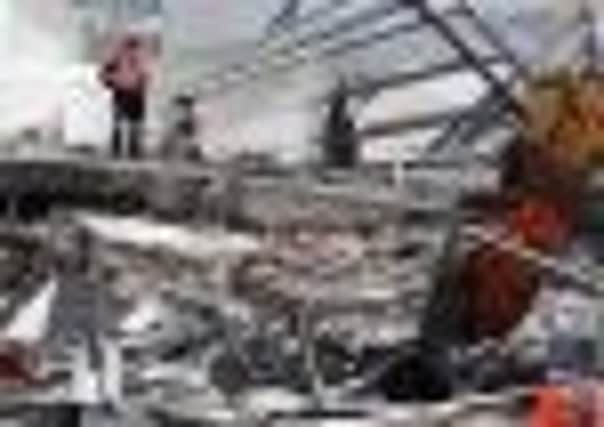Building destroyed by earthquake did not meet safety standards


The six-storey structure was made of weak columns and concrete, officials said.
Today’s report could open the door to legal claims by victims’ families.
Advertisement
Hide AdAdvertisement
Hide AdPolice are now considering whether to open a criminal investigation.


But the building’s designer is contesting the findings, saying the report is “technically inadequate”.
The Canterbury Television (CTV) building fell into a smouldering heap when the magnitude-6.1 earthquake shook Christchurch in February last year, and its collapse accounted for nearly two-thirds of the quake’s 184 victims.
New Zealand’s Department of Building and Housing concluded that the CTV building did not meet minimum requirements when it was built in 1986 - and would fall far short of the latest standards.
The report is the first to find construction flaws in a building that collapsed during the earthquake.
Investigations into other buildings that at least partially failed found all were built to code requirements but failed due to the intensity of the quake.
Brian Kennedy, whose wife Faye died in the CTV collapse, said said the report helps give him at least some sense of closure.
“It gives me a feeling that I understand exactly what happened, how quick it happened, and that thank god it didn’t happen to other buildings,” he said.
Advertisement
Hide AdAdvertisement
Hide AdAs to legal matters, he said family members would first want to hear from the designers, builders and inspectors at an ongoing inquiry into the quake.
In its report, the building department concluded that load-bearing concrete columns were reinforced with insufficient steel, making them brittle, and that the columns’ asymmetrical layout made the building twist during the quake, placing extra strain on those columns.
Tests after the collapse also found the concrete in load-bearing columns was “significantly weaker than expected” the report said.
The report did not specify who was to blame for the shortcomings - the architects who designed the structure, the construction company who built it, or the officials who inspected it.
Alan Reay Consultants, which carried out the building’s initial structural design, disagreed with the report.
Alan Reay, the company’s director, said in a statement: “I have huge empathy for the families waiting for answers, but these reports are technically inadequate ... Some of the assumptions made in the reports are highly questionable.”